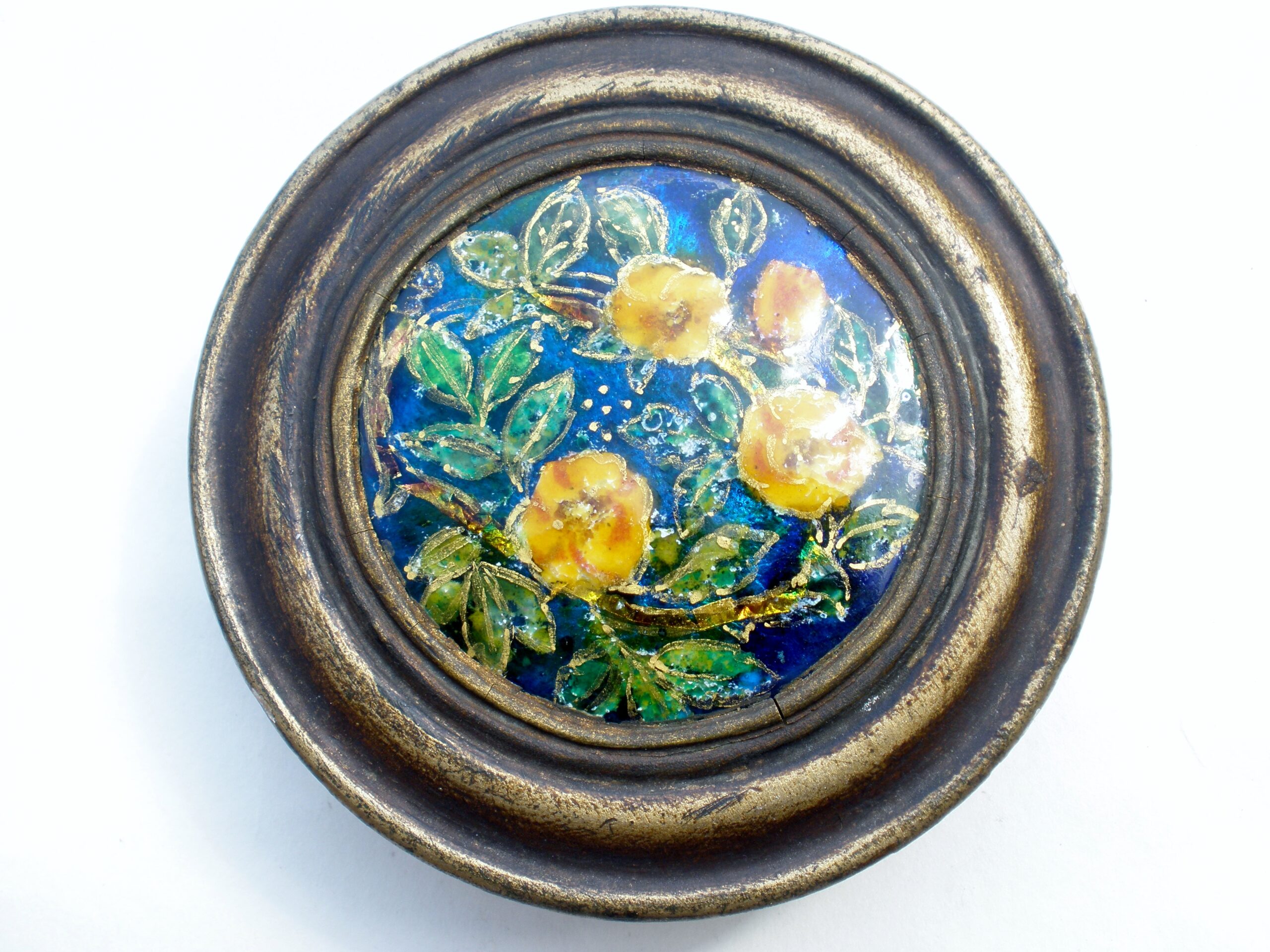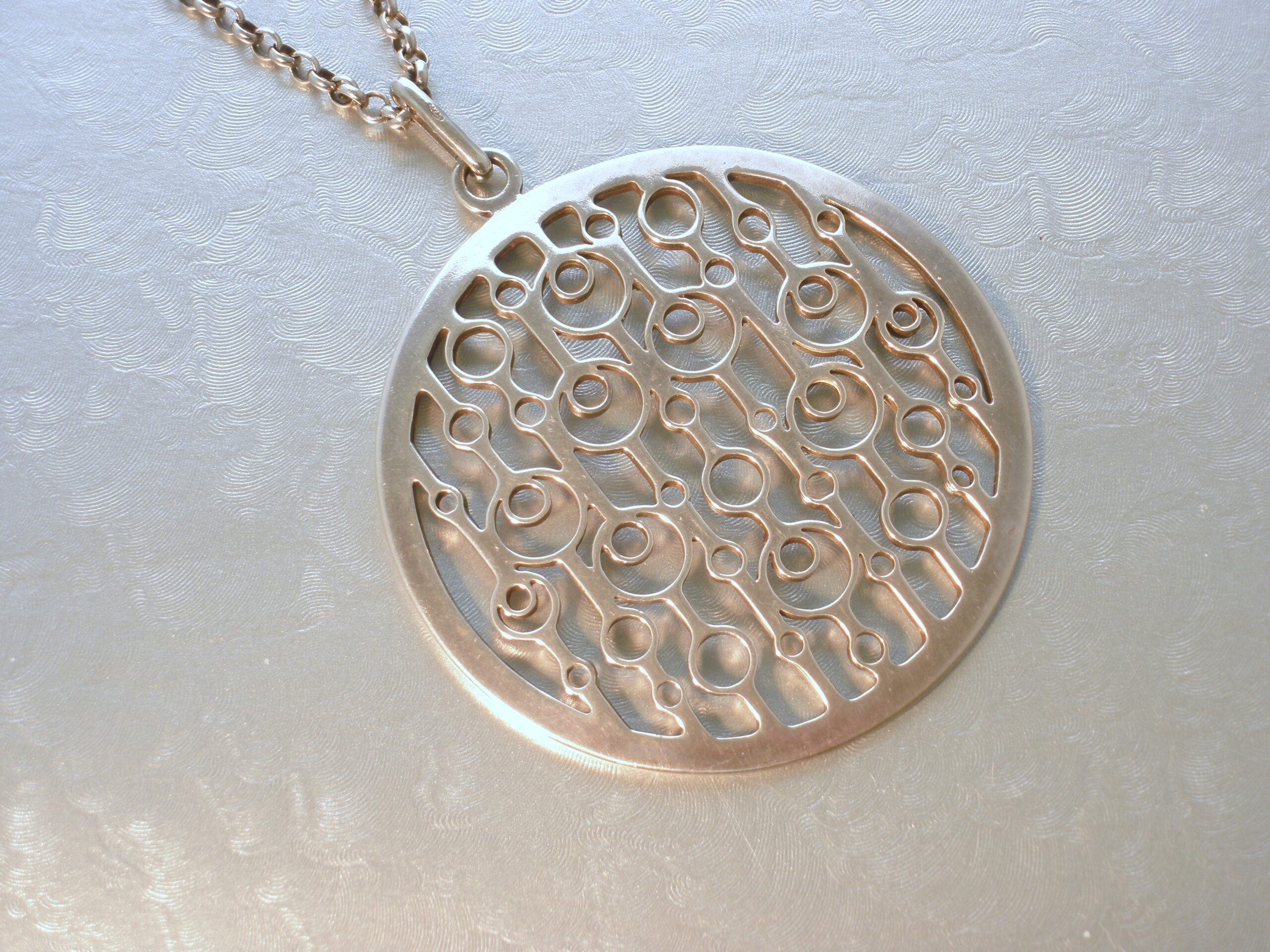Description
Ernestine Mills (1871-1959), a rare enamel and gesso box, circa 1925, the enamel panel of a flowering bough, with EM monogram for Ernestine Mills, mounted to a circular gesso box with pull off cover attributed to the Rowley Gallery, enamel panel 5.5 cm in diameter, the box 9.2 cm diameter overall SOLD
For examples of Ernestine Mills enamels set into Rowley gesso items see ‘New Dawn Women (Women in the Arts and Crafts and Suffrage Movement at the Dawn of the 20th Century)’ exhibition catalogue by Irene Cockroft (2005). For an example of a box, see illustration 90, page 40. ISBN-10: 0954823028 ISBN-13: 978-0954823023
Ernestine Mills (nee Bell) was one of the Arts and Crafts movements leading exponents of enamelling. She studied at the Slade School of Art, Finsbury Central Technical School, and South Kensington School of Art. Apprenticed to Frederick Shields she developed her enamelling skills. Ernestine Mills also furthered her enamelling skills under Alexander Fisher. She was also accomplished in metalworking. Ernestine was active in the Suffragette movement producing jewels, medals and badges for the WSPU. It was at the South Kensington School of Art she met and studied with Sylvia Pankhurst. As a member of the British Society of Women Artists, 1943-44 saw Ernestine Mills become Acting President. The work of Ernestine Mills can be found in various museums in the UK and abroad. These include the V&A, Cheltenham Museum, the Museum of London and the Delaware Art Museum.
The Rowley Gallery was founded in 1898 by Albert Rowley. The Gallery made and supplied frames for many of the leading artists of the day. Often these frames were unique and produced under direction of the artist. Albert Rowley was inspired by the Arts and Crafts movement as expounded by William Morris. Albert Rowley was a good friend of Sir Frank Brangwyn since their schooldays together. Through the 1920’s and 1930’s Rowley became renowned for their inlaid wood frames, mirrors and screens. Albert’s son Laurence joined in the 1920’s introducing furniture design in to the company range.







